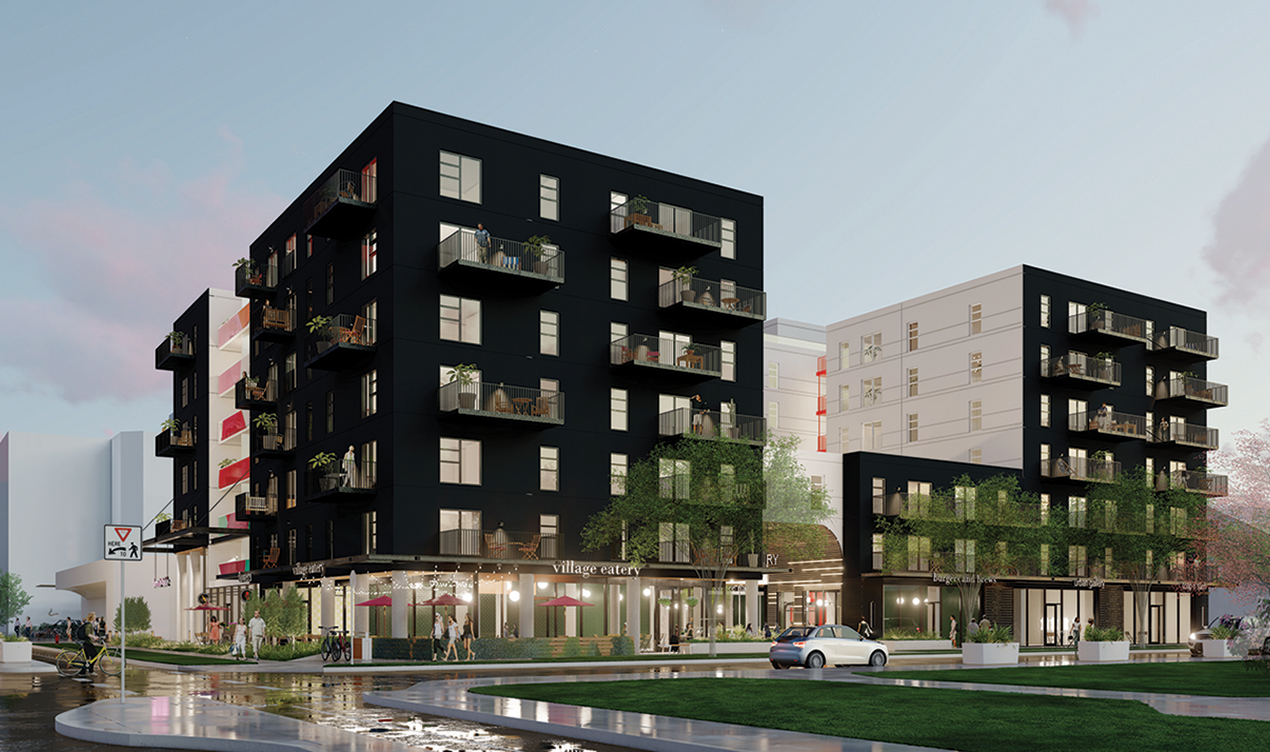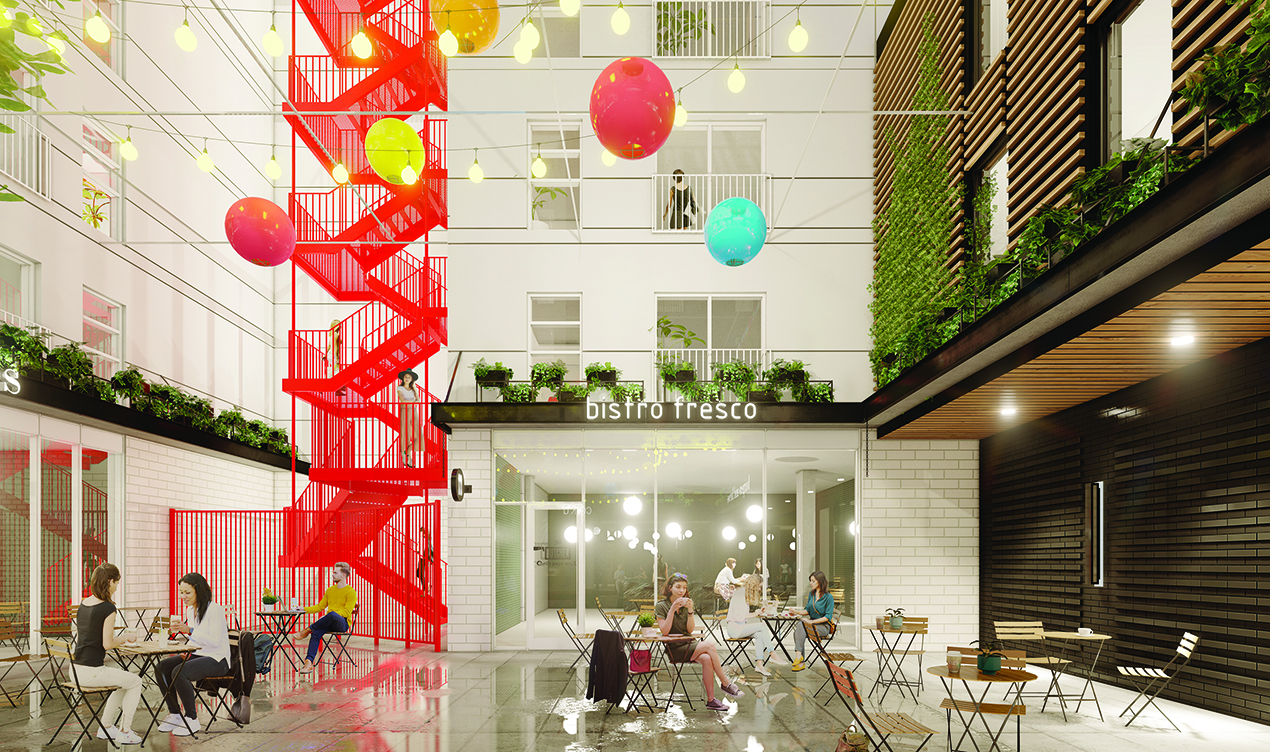
Alberta is growing, fast. When the Legislature began its autumn session, the Throne Speech suggested this province could have as many as 10 million residents by the year 2050.
That’s right, Alberta’s government is anticipating that we could more than double in population in the space of just a quarter century.
Throne Speeches are notoriously optimistic, and the government didn’t provide a source for that 10 million figure. But there’s no denying Alberta’s undergoing historic growth, and we’re already in the midst of a national housing crunch. With so many more residents expected, how do we expect Edmonton to keep pace yet still maintain its biggest advantage of all — the fact that houses here are more affordable than they are in other parts of the country?
“Edmonton remains the most affordable city out of the big five major cities in Canada,” says Emmett Hartfield, principal at Intelligence House, a real-estate marketing and research firm. “The new zoning bylaws implemented by the City of Edmonton to allow for higher density in any neighbourhood will hopefully keep affordability issues away.
“But issues we are seeing right now in Calgary and in Edmonton in some sense are mass interprovincial migration numbers at a rapid pace due to affordability problems in Ontario and B.C. This might continue for many years and could continue to drive housing pricing upwards in Edmonton and Alberta, as demand outpaces supply.”
According to those who build the houses, the biggest threat to Edmonton’s affordability advantage is red tape. “Don’t fix what is not broken,” warns Adil Kodian, executive vice president of the Rohit Group of Companies.
He says Edmonton can learn from two Canadian cities that are very close to it in size — Calgary and Ottawa. Both of those cities have approved plans that curb development. Calgary has a stated goal that, when it comes to growth, half of that should come in existing neighbourhoods, while half will be in new subdivisions. Ottawa’s plan is to expand by 1,350-1,650 hectares by 2046. While that seems like a lot, it’s a finite number with not a lot of wiggle room.

“You cannot afford to buy anything in Ottawa. Here, you can afford to live. Edmonton is an experiment on how to maintain affordability and not restrict where people can build, and we should continue that success,” says Kodian.
Kalen Anderson, a former City of Edmonton director of planning who is now the CEO of this city’s branch of the Urban Development Institute, says that policy has “constrained new suburb growth and that constraint has led to higher home prices,” adding that while Calgary is getting the bulk of new residents making their way to Alberta, she says its plan to limit new development has done a lot to raise the average price-per-door there.
The numbers show the disparity between the cities. According to Calgary Real Estate Board statistics from October of 2023, the average price of a detached home in Calgary was $726,568, and $614,741 for a semi-detached residence. Compare that to numbers from the Realtors Association of Edmonton: In this city, the average prices were $486,751 for a detached home, and $385,895 for semi-detached.
Ottawa’s average price for a single detached home was $810,319.
But Edmonton is moving towards limiting subdivisions. This year, the City will review its Growth Management Plan. According to the City of Edmonton’s own stats, about two thirds of our new developments are on the south side. Developers will tell you it’s a simple case of supply and demand — people vote with their dollars, and a house is the biggest financial commitment a family can make.
But the City wants to follow a plan that’s called “substantial completion” in administrative doublespeak. Think of it as a scoreboard: If one area of town expands too quickly, the City needs time to develop that area’s services and amenities before approving developments elsewhere. If the plan goes through, the City will begin limiting southern subdivisions, encouraging developers to go to other areas of town.
It has been widely supported by council, so far. The arguments are that the City is paying to maintain roads, pick up the garbage and provide transit to subdivisions that are pushing outward. That adds costs.
City Councillor Erin Rutherford, when voting on this issue, said she can’t support a continuing push for the city to expand south.
“It’s not constraining growth for all of Edmonton, it’s constraining growth for a certain part of Edmonton. To continue down that path, to go in the direction that industry was asking us, would be like knowing something isn’t working but continuing to do it anyway. I can’t support that.”
While developers say that messing with the supply and demand curve could force the prices-per-door upward, Mayor Amarjeet Sohi countered that the City must also look at the affordability of the services it provides to residents.
“We should not look at affordability in isolation,” he said. “We should look at affordability in a holistic way. If we are unable to provide access to quality public services, then people are forced to make choices that are much more expensive for them.”
Anderson says she is concerned about this political shift.
“At its purest level, it’s a case of supply and demand,” she says of the housing market. “For the city of Edmonton to count itself out of the game, I think that’s short sighted.”
When she worked at the City as a planner, Anderson said the strategy was that a 25-year supply of land was always ready.
“We need to ensure a timely and uninterrupted supply that meets many needs.”
And that has worked, says Kodian, adding that developers will build where their market research shows people want to live.
“If I build in the wrong area, I get smacked,” he says. “The political will to bend people’s choices one way is very expensive if it is wrong.”
The “build where people will live” mantra is also holding true in the central part of the city.
Henry Edgar is the president of Autograph, which has built the 27-storey MacLaren building at the corner of 102nd Avenue and 124th Street, and the seven-storey Mercury Block at 102nd Avenue and 123rd Street.
He says that those in the business of developing and building high-density towers are in a period of big risk, that these properties are expensive to build, and renting the units is the way to go. “The condo market is challenged in Edmonton because of our affordability in single-family homes.”
But he believes strongly in the 124th Street area, because market research shows that is where people want to rent. With two phases of the Mercury Block and the MacLaren all close to each other, he envisions a “West Village” filled with ground-floor retail. The MacLaren already has a wine bar, a local pub, coffee shop and a design studio.
Why bet heavily on the area formerly known as Oliver (name change coming soon, promises the Oliver Community League) over downtown?
“We have an easier time rationalizing development here because we’re building off of our own energy,” he says. “We built the MacLaren, it was quite successful, it’s full of people. You’ve got elm trees and bike lanes and bricks-and-mortar retail. Ultimately, all of that contributes to a sense of safety when you’re walking around in the evening. We feel really confident about the success of our developments in this area.”
He says that the retail bays in these developments are “already almost all spoken for” and as of December 2023, over 200 people were already “registered for interest” in Mercury Block.
Meanwhile, things have slowed on The Shift, a 730-unit project near Warehouse Park, downtown. Edgar says for a downtown project to work, it needs a significant, rapid “absorption” — that is, like the condo market, the rental property owner needs to have a large number of units spoken for as the project is built. And Edgar’s not confident the economics work anymore without any incentives from the City.
“Downtown, while not that far away geographically, has a very different feeling on the street. When we think about our larger developments right in the centre of the core, there’s a vibrancy issue that is especially challenging at night. The economics of building towers is very expensive.”
Hartfield echoes the concerns about the core.
“Edmonton really needs to focus on cleaning up the downtown in order to help attract newcomers. This continues to be a major concern for local residents as well as newcomers and visitors to the city.”
While the development community’s No. 1 fear is the spectre of regulatory changes, interest rates and labour shortages are other big issues.
“My biggest concerns at the moment generally have to do with the policies implemented by the federal government and inflation,” says Hartfield.
“The Bank of Canada and the Liberal Party are not on the same page when it comes to monetary policy and are going in different directions. The BOC is focused on a plan to lower rates while the Liberal party continues to spend money irresponsibly — money we don’t have, resulting in the BOC not being able to lower rates. This will ultimately affect housing affordability for many people when their mortgages are up for renewal.”
Interest rates affect developers and homebuilders two ways. They make no extra money on higher interest rates, that all goes to the banks. What they do is make it harder for families to qualify for mortgages. It makes the houses more expensive.
And, while the land is being developed, the carrying costs are higher. So, the investors are paying out more in the years it takes to prep the neighbourhood and build the homes.
But, the perfect storm that’s coming is this: Alberta brings in millions of new people, but we don’t have enough trades-people to build the homes quickly enough.
“Ask any 16-year-old if they’d rather be a YouTuber or a roofer. You know what the answer is going to be,” says Kodian.
He hopes that federal and provincial governments will make it easier for trades-people immigrating to this country to get their tickets. “Are there carpenters out there who are currently Uber drivers?”
Something to chew on: would we have better public participation in things like zoning hearings, if they were actually held at times that were convenient to the public?
As a rule, public hearings usually take place on weekdays at 9:30 a.m. at City Hall. They are livestreamed (and archived) on YouTube, so they are not inaccessible. But, to speak at a hearing, you need to make time on a weekday — and that’s not easy. You can speak via Zoom or head downtown.
“Representation is made by people who have the time to do it,” says Kodian, and he feels it can skew the picture of what Edmontonians really want.
Kodian says when his company consults with residents, a school is booked in a convenient neighbourhood and the meeting is scheduled for after 4 p.m.
For a working family who has to get the kids to school, a weekday morning meeting is inaccessible.
So, the question: When council has hearings on things like neighbourhood renewals, where they are looking for public input, should they not be held during evenings?
This article appears in the Jan/Feb 2024 issue of Edify









